A slim and fit body is the dream of many people, but in the pursuit of ideal results, people go to extremes, torture themselves with hunger, deprive the body of essential nutrients, and ultimately lead to countless health problems.
In fact, to lose weight and stay healthy, you need to eat right. In this article, we'll show you how to make a week-long PP menu - to stay beautiful and healthy without hurting your body.
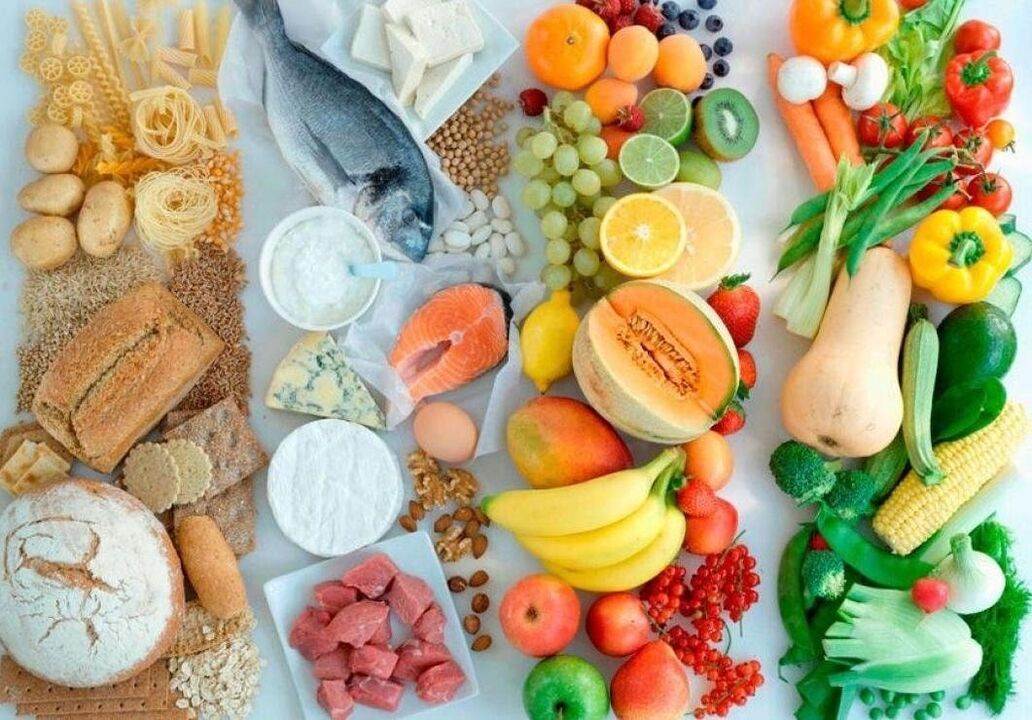
The benefits of proper nutrition
PP (proper nutrition) has many benefits. That's why it's gaining popularity among advocates of healthy lifestyles.
- A well-designed weight loss and general recovery diet allows you to support your body's development, growth, and vital activities. To avoid many health problems, you should switch to the PP menu as early as possible. Ideally, you need to eat well throughout your life - for example, this lifestyle means the Mediterranean diet.
- It is recommended to develop a special menu to prevent various diseases. A well-thought-out, balanced PP diet is excellent at preventing gastrointestinal disease, heart and vascular disease, and uncontrolled weight gain.
- By adhering to the principles of proper nutrition, you can stay in shape. No diet can guarantee lasting results without compromising health. PP is a bit of a golden mean in this regard. Thanks to him, it is possible not only to lose weight, but also to maintain the desired weight if necessary.
- Transitioning to a balanced diet also includes physical activity. Lack of liquidity won't get you where you want it to be. Therefore, anyone who wants to lose weight must exercise regularly.
- According to recent research, menus compiled according to all rules significantly reduce the risk of depressive states. This is a guarantee of physical health and mental stability.
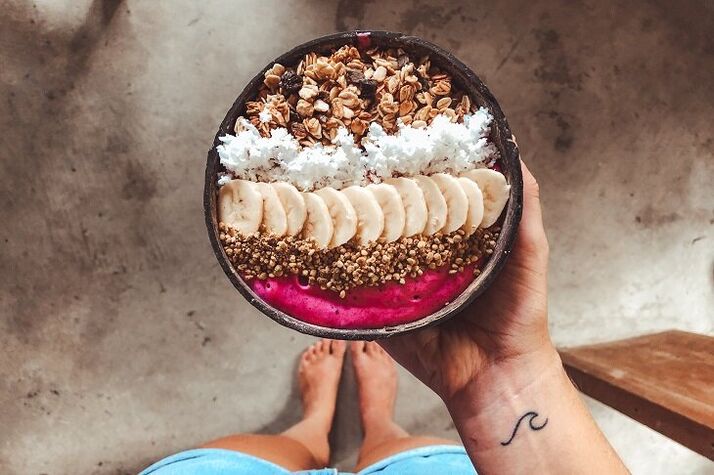
How much can PP drop?
You should not expect that by switching to the PP diet, you will get the desired results immediately. The process involves serious long-term work. During the first week, fluid leaves the body, swelling subsides, and metabolism resumes. Much depends on exercise. Regular training helps to achieve the desired results as quickly as possible.
Losing weight too quickly is a real health hazard. Therefore, the goal of switching to a PP rule-based diet menu is to lose weight, but at the same time stay healthy. It is recommended to lose weight no more than 3-4 kg per month. This can be achieved through a well-designed diet and moderate physical activity: for example, 3-4 cardio sessions per week and 15-20 minutes of daily walks in fresh air.
You can lose excess weight more intensively. This requires increased physical activity.
Also, don't take the individual characteristics of the body lightly. Some people can lose weight faster, others need more time to achieve the desired results.
Furthermore, with every kilogram of weight lost, the body starts to resist this rough treatment of its reserves. Therefore, the longer you stick to a balanced diet, the slower you will lose weight. However, this situation does not mean that the technology has stopped working. It's just that the body tries to save as much as possible, reluctantly parting with the excess grams. Forget about the balance this time, better start measuring your own parameters. This will make it easier to track changes.
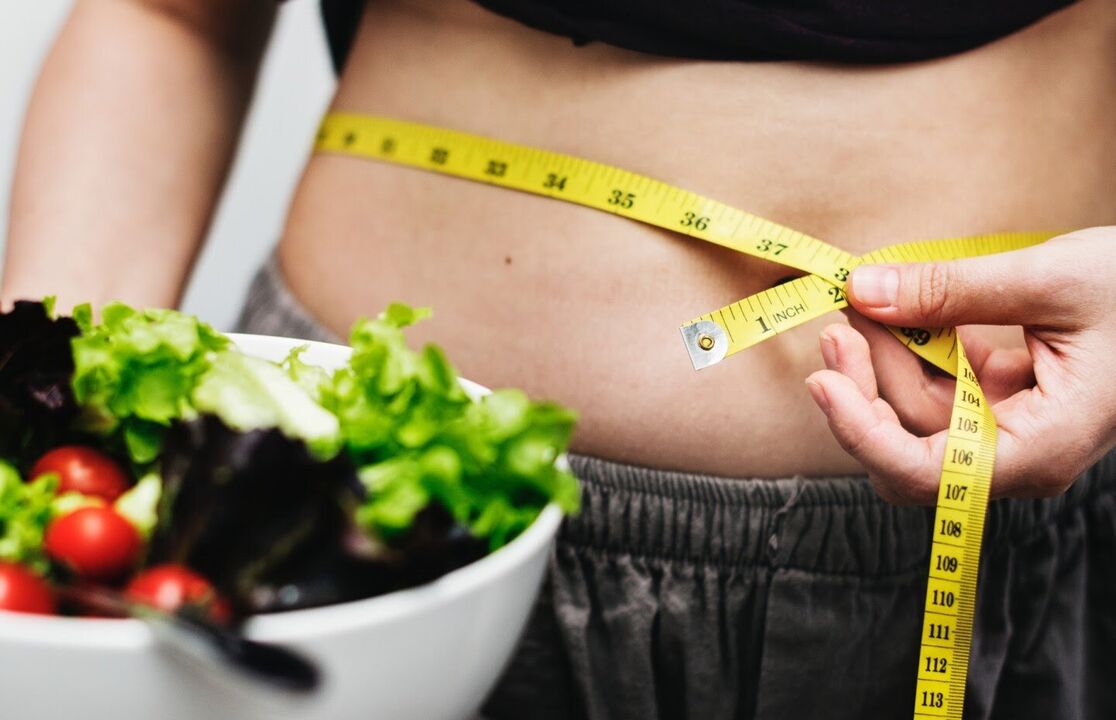
Where to start with proper nutrition
When developing your daily weight loss menu, it is important to adhere to some principles of proper nutrition:
- Drink plenty of water (normal drinking water). It promotes accelerated metabolism to remove harmful substances from the body.
- Eat regularly, don't skip meals. Hunger makes our bodies reserve reserves for the future.
- When cooking, do not exclude spices. Unleavened foods made from the finest products look inedible and tire quickly. Resisting the temptation to break will be harder.
- Don't give up sweets. In place of regular sugar, use a substitute or honey. In cooking, use rye flour or bran.
- Stop eating foods rich in dietary fiber: oats, beans, nuts, fresh vegetables, olives, berries.
- Prioritize soluble fiber and slow carbs. Only buy pasta with durum wheat. In place of white rice, take brown.
- Don't forget physical exercise. Only regular exercise will help you achieve the desired results. After all, you need to burn more calories than you burn.
- Don't be lazy trying new recipes and expand the list of products used. Monotonous food can quickly become boring.
- Eat your last meal of the day no later than 2-3 hours before bedtime (unless you're using intermittent fasting for that purpose).
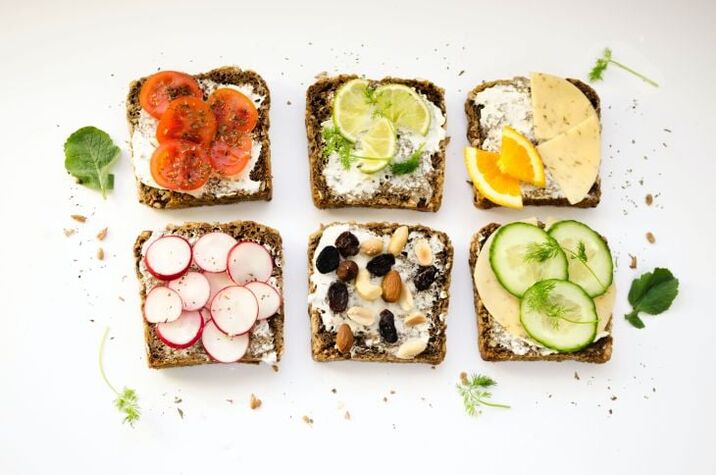
what to exclude with proper nutrition
The easiest way to do this is to keep the selected mode and avoid situations that could cause failures:
- When compiling a proper nutrition menu for weight loss, pay attention to getting enough sleep. Getting rid of excess weight is itself a serious strain on the body. The body tries to conserve energy. A person gets tired faster and wants to sleep more often. Therefore, getting enough sleep and avoiding overwork is very important.
- Get into the habit of eating fresh vegetables, herbs, and fruits, and maintain a varied diet to ensure your body is getting enough vitamins and minerals.
- If possible, completely eliminate alcohol products from the diet. In addition to the obvious harms of alcohol, alcohol also contains sugar, which can increase appetite.
- Don't go shopping hungry. Be sure to buy a lot more than you need, and be sure to buy something that is harmful and high in calories.
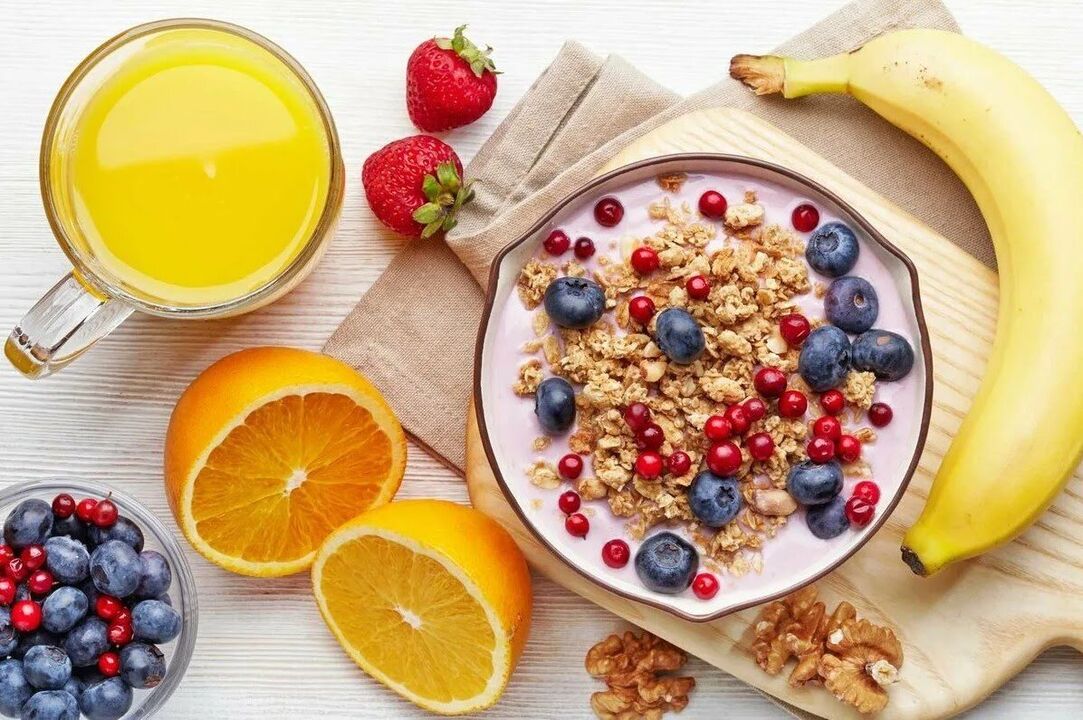
Products with proper nutrition
First, we list the products that should form the basis of a balanced diet:
- vegetables low in starch;
- Cabbage (sea);
- Poultry (white), rabbit meat;
- protein;
- bulgur, brown and wild rice, oats, couscous, buckwheat, spelt;
- durum wheat pasta;
- rye and multi-grain breads;
- Whole wheat bread;
- lean fish, seafood;
- olive and linseed oils;
- nut;
- natural flavors;
- Dairy and dairy products (low calorie).
The above list does not apply to all diets. So, for example, if you're practicing a detox to lose weight, the list of allowed foods will be different.
When forming a menu, it is important to remember that the following products should be consumed in moderation:
- Vegetables that are high in starch (same potatoes);
- fatty cheese;
- sweet fruit;
- cottage cheese.
Say "no" to the following positions:
- Alcohol;
- corn;
- High-calorie confectionery products not included in the PP diet;
- regular sugar.

What to look out for when preparing a meal
First, it is necessary to assess the level of physical activity and calculate the daily calorie intake.
Physical activity can be:
- Minimal - when a person lives a sedentary lifestyle and does not exercise.
- Simple - if you have to sit and work most of the time and train no more than 2-3 times a week.
- Moderate - Indicates the presence of low-intensity physical activity (up to 5 workouts per week).
- High - When the work day is inseparable from high-intensity training. A complete sports lifestyle.
- Extremely high - very hard work plus daily exercise.
After determining your load level, calculate your daily calorie intake. This is done using the Mifflin-San Geor formula:
Simplified version:
- Male: 10 x weight (kg) + 6. 25 x height (cm) - 5 x age (g) + 5;
- Female: 10 x weight (kg) + 6. 25 x height (cm) - 5 x age (g) - 161.
Revision:
- Male: (10 x weight (kg) + 6. 25 x height (cm) - 5 x age (g) + 5) x A;
- Women: (10 x weight (kg) + 6. 25 x height (cm) - 5 x age (g) - 161) x A.
A - The level of human activity, the degree of which is shown above.
Proper nutrition menu for the week
Diet will vary based on desired results. For example, consider a menu with varying amounts of daily calorie consumption. All products in the table are in grams.
1000 Calorie Daily Weight Loss Diet
| day of the week | Meal Calories (kcal) | ||||
|---|---|---|---|---|---|
| Breakfast 249 | lunch 99 | Lunch 299 | Afternoon Tea 99 | Dinner 247 | |
| on Monday | cottage cheese - 150 | Berries - 100 | Chicken Tenderloin and Buckwheat - 100 each | Cooked Corn - 1 | Fresh vegetables - 204 |
| Tuesday | Boiled Eggs on Whole Wheat Bread | A fruit smoothie | Vegetarian Ratatouille | Cheese - 30 | Chicken fillet - 80 |
| Wednesday | loaf of brown bread with curd | Berries or fruits - 143 | Vegetable Stew - 201 | Nuts - 30 | boiled eggs |
| Thursday | Cottage Cheese - 145 | Berry Smoothie - 200ml | Vegetable Soup - 201 | glass of milk | Stews - 146 |
| Friday | Skim milk porridge - 154 | Pressed Cereal - 70 | Side dish boiled chicken 100 | Whole Wheat Bread with Cottage Cheese | Seafood - 130 |
| Saturday | Tomato Egg White Salad - 149 | apple | No broth - 201 | yogurt | Steamed Beef - 99 |
| Sunday | Apple Pancakes (PP) - 149 | orange | Fish Stew with Vegetables - 100 each | Kefir or ryazhenka - one cup | Fruit - 150 and herbal tea |
Weekly menu, 1200 kcal per day
| day of the week | Meal Calories (kcal) | ||||
|---|---|---|---|---|---|
| Breakfast 298 | Lunch 156 | Lunch 288 | Afternoon Tea 309 | Dinner 283 | |
| on Monday | Tomato Omelette - 248 | apple | Fish Salad - 143 Plus Vegetables - 150 | Nuts or dried fruit - 40 | Stew - 250 |
| Tuesday | Berry Water Porridge - 230 | Cottage Cheese and Berry Smoothie - 1 cup | Boiled Bird with Herbs - 230 | low-fat yogurt | Steamed Fish - 201, Fruit Salad - 140 |
| Wednesday | Greek Cheese - 60 | orange | Chicken Salad - 200, Soup - 100 | Cheese Casserole - 99 | Steamed Poultry - 150 |
| Thursday | Oatmeal Pancakes - 100 | 1/2 grapefruit | Vegetable Rice - 202 | A glass of ryazhenka or kefir | Garnished Beef Liver - 100 each |
| Friday | Skim Milk Porridge - 250 | Berry Smoothie - Glass | Turkey Stew - 120, Whole Wheat Bread | Fruit Salad - 130 | Boiled Eggs and Nuts - 40 |
| Saturday | Fried egg - 99 | a cup of kefir | Vegetable Soup - 203, Steamed Chicken Tenderloin - 100 | Berries - 60, Herbal Tea | Boiled Fish - 150, Unsweetened Coffee |
| Sunday | Cheese Casserole - 120 | Smoothie from Berries and Milk - 200ml | Stew - 230, green tea | Whole Wheat Bread with Cheese | Buckwheat Poultry Stew — 201 |
A diet of about 1, 500 calories per day
| day of the week | Meal Calories (kcal) | ||||
|---|---|---|---|---|---|
| Breakfast 351 | Lunch 249 | Lunch 351 | 249 pm | Dinner 351 | |
| on Monday | 2 vanilla hard boiled eggs | orange juice with cheese | Grilled Fish - 120, Fresh Vegetable Salad - 100 | Nuts - 30 and green tea | Chicken Stew - 149, Stew - 80 |
| Tuesday | Cottage Cheese and Tomato Casserole - 250 | 1 cup kefir with cereal - 30 | Pasta - 149 Beef - 100 and Vegetables - 150 | orange | Fish Salad - 180, Whole Wheat Bread |
| Wednesday | repeat monday morning | ½ grapefruit, green tea sweetened (1. 2 tbsp) | Vegetable Soup - 201, Low Fat Cheese - 30 | fruit smoothie | Steamed Bird - 149, boiled egg |
| Thursday | Skim milk porridge - 249, unsweetened coffee | Casserole Berry - 149 | Vegetable Stew with White Meat - 250, Brown Bread with Curd | Bananas with Nuts - 20 | Boiled Fish - 150, Vegetable Salad - 130 |
| Friday | Boiled offal (chicken liver) - 180 | Cabbage, Carrot and Cucumber Salad - 150 | Chicken Goulash - 100, Grain Garnish - 100, Herbal Tea | Cottage cheese - 100, jam - 1 tbsp. l. | Roast poultry - 180, vegetables and curds - 70 |
| Saturday | Brown Rice with Vegetables - 100, Kefir | low-fat yogurt, apple | Vegetable Soup - 250, Fresh Vegetables - 100 | Apple Pancakes - 2 pcs. | Buckwheat - 100, Boiled Turkey - 100 |
| Sunday | 2 hard boiled eggs | Bananas with coffee without sugar | Chicken Stew with Vegetables - 230, Whole Wheat Bread | orange | Beef Stew - 140, Cottage Cheese - 100 |
Daily PP Recipes
When compiling an approximate diet for weight loss, there is absolutely no need to eat the same foods every day. There are many healthy recipes. Here are some examples you can use.
First: Vegetable Soup
- lean beef - 200 grams;
- eggs - 7;
- Onion - 1;
- Potatoes - 4;
- sorrel - 50 g;
- Spices, salt to taste.
Cut the meat into small pieces and cook until half cooked. Add potatoes and spices to the broth and add salt. Fry the onions in olive oil until golden brown, then add to the soup along with the chopped sorrel. Chop hard-boiled eggs and serve with vegetables. Cook the cabbage soup for another 5 minutes, then for half an hour.
Two: Vegetable fish (grilled)
- fish (salmon) - 450 g;
- Cauliflower - 450 grams;
- Lemon juice and soy sauce - 4 tbsp. l. ;
Marinate the cleaned fish in the sauce and lemon juice mixture (30 minutes). Divide the cabbage into inflorescences. Place vegetables and salmon on a baking sheet and bake at 180 degrees for 25-30 minutes.
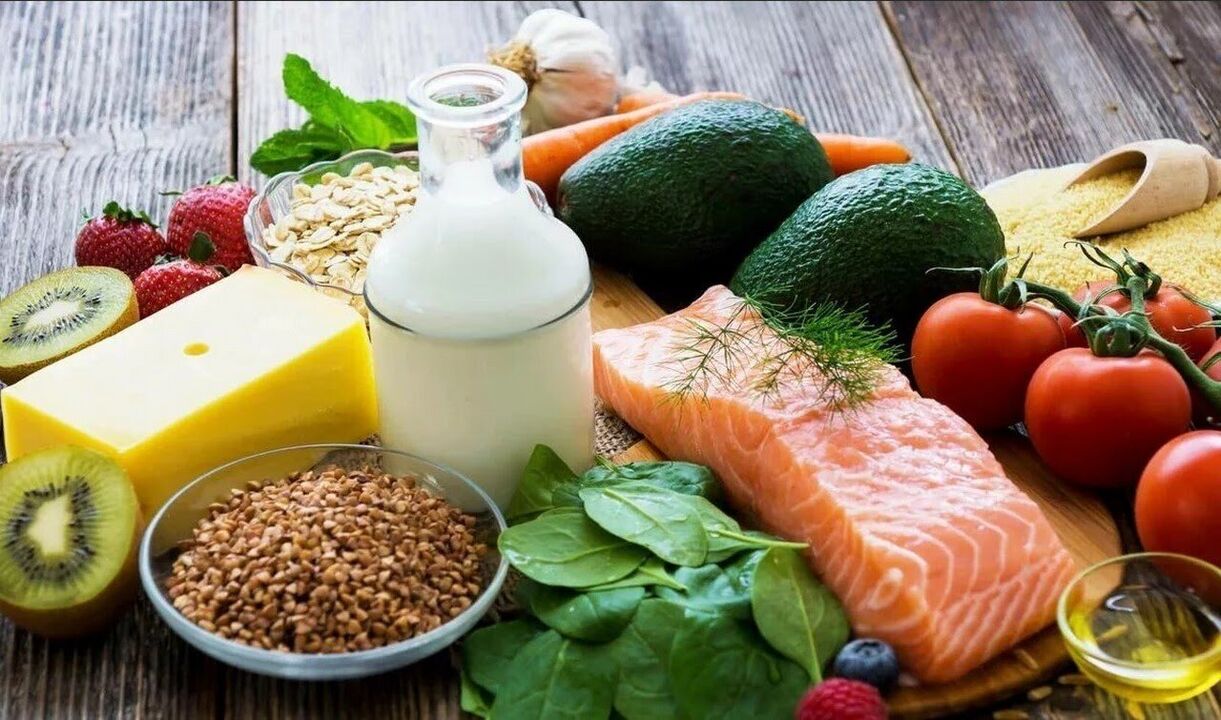
Chili Bean Salad
- Frozen green beans - 300 g;
- Bell peppers - 100 g;
- Lemon Juice - 2 tbsp. l. ;
- A clove of garlic.
Cook the beans for a minute, drain and cool. Add chopped pepper and minced garlic. Drizzle the salad with lemon juice if desired and season with salt and pepper.
Dessert: Cheese Snacks
- Mass of curd - 250 g;
- egg - 1;
- Sugar substitute - 2 tablespoons. l. ;
- apple;
- banana.
Mix the eggs with the cottage cheese, and pour the sweetener and diced fruit into the mixture. Cook in a 750-watt microwave for 3 minutes.
Snack: Fruit Smoothie with Kefir
- Banana - 1;
- pear - 1;
- Kiwi - 1;
- honey - 1 teaspoon;
- A glass of kefir.
Rinse fruit, peel and chop. Grind all ingredients (including kefir) in a blender.
How to count calories
During cooking, the product loses volume - a natural consequence of heat treatment. However, the calorie content remains the same. So, if you cook chicken slices (200g), the weight of the finished product is only 150, but the number of kcal will not change. To determine the calorie content of a finished dish, it is necessary to weigh all its ingredients and calculate the calories contained in them.
What to Consider When Compiling Your Personal Weight Loss Menu
Diet preparation should be taken with the utmost seriousness. To get rid of excess weight and keep it within the normal range, for therapeutic purposes, a different approach is required. It can be especially difficult for people with chronic illnesses or intolerances to certain foods. When developing a nutrition plan, they need to consult their doctor first. Otherwise, the diet will only bring additional health problems.






























